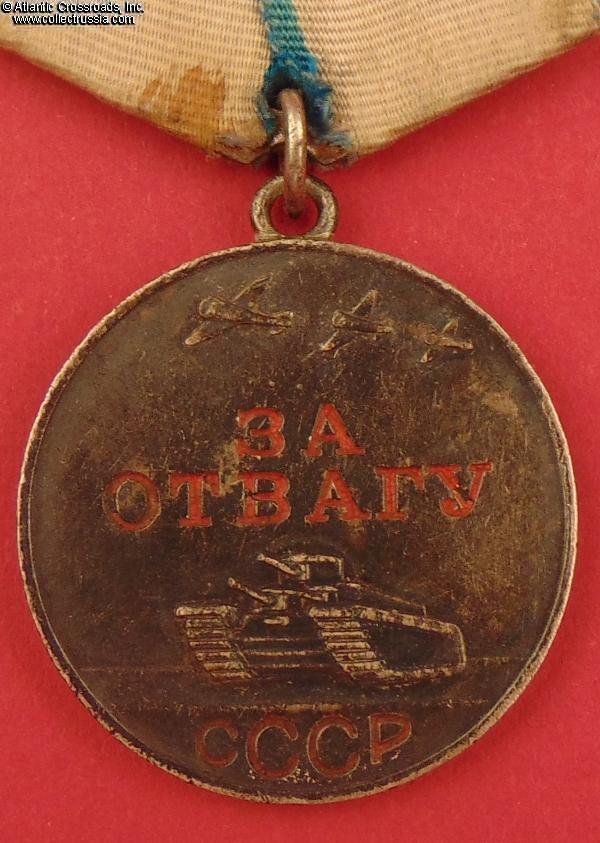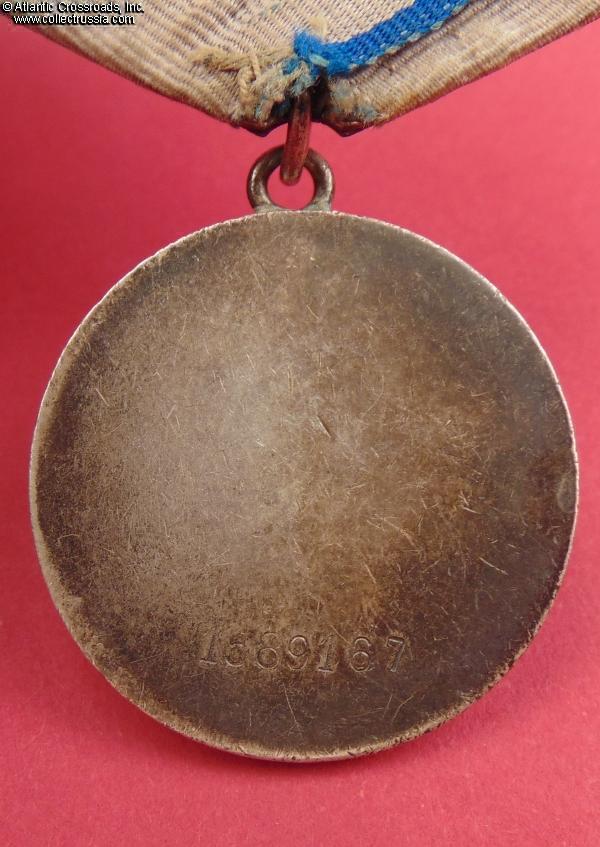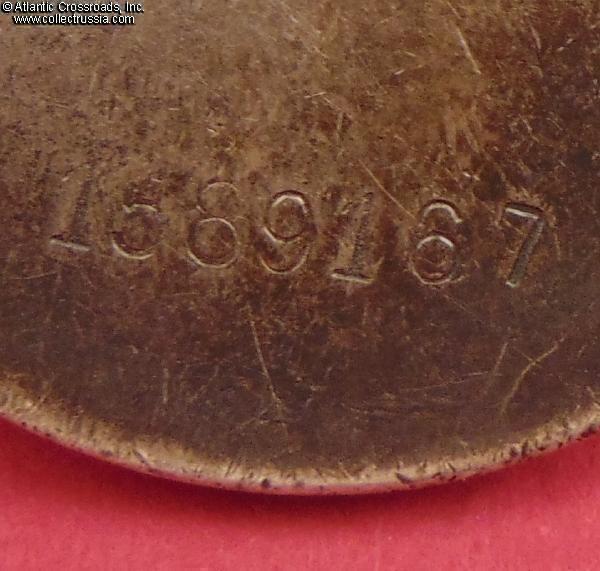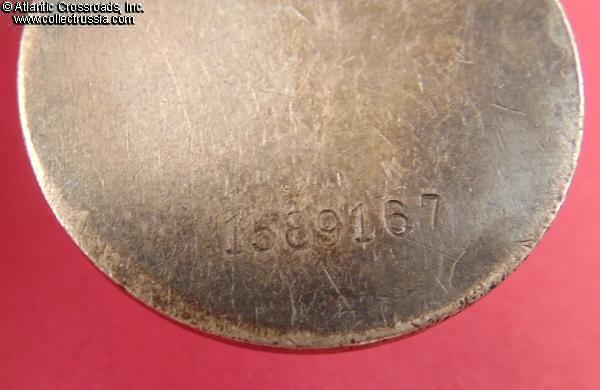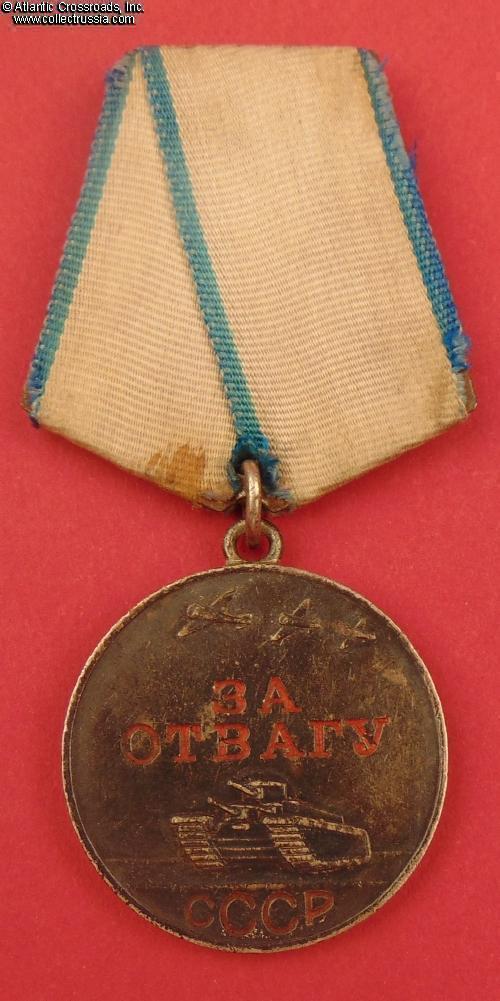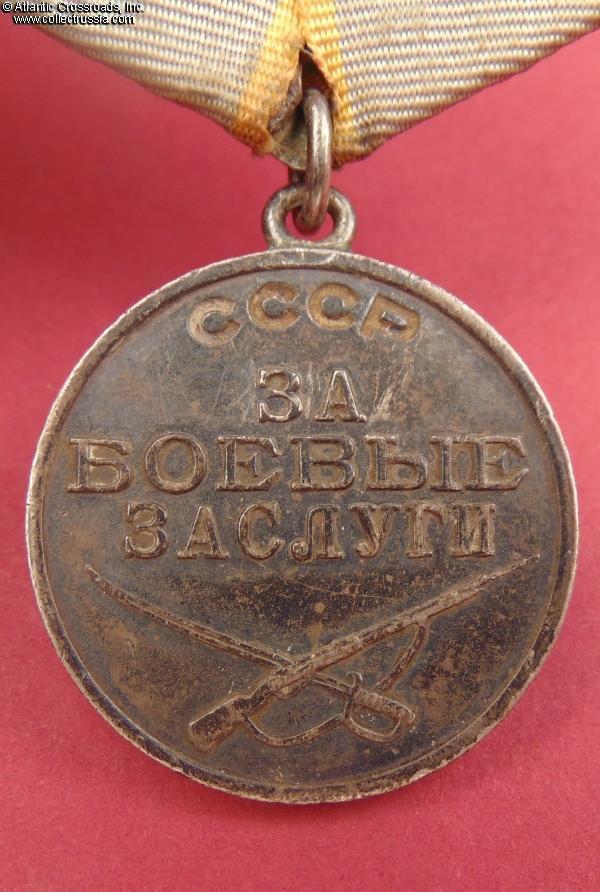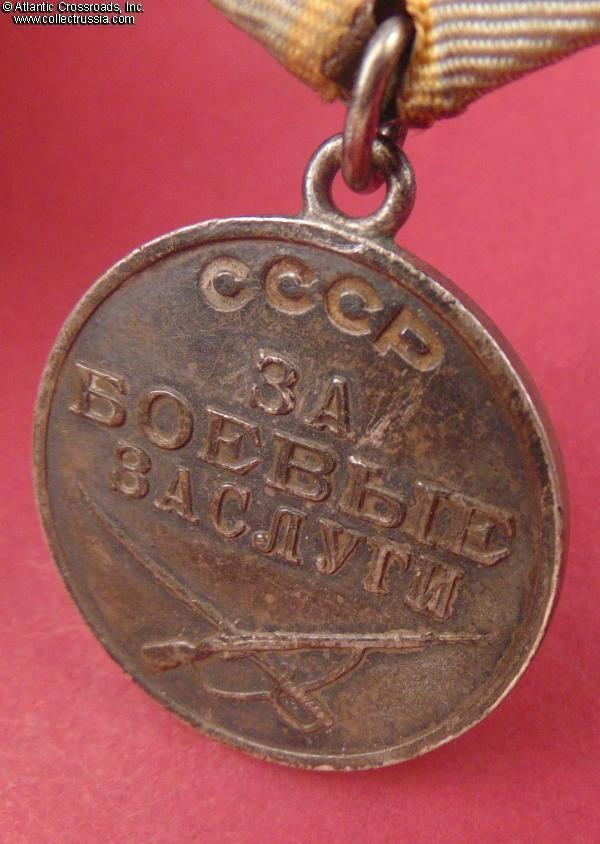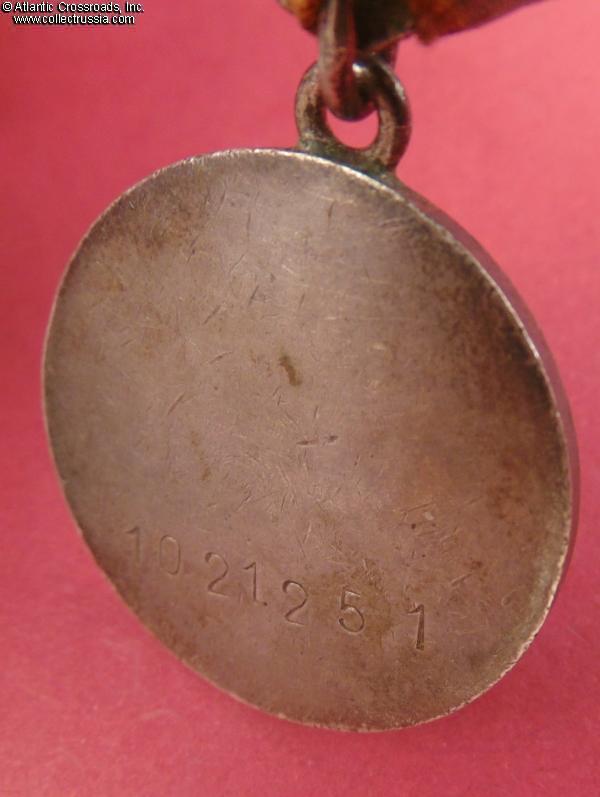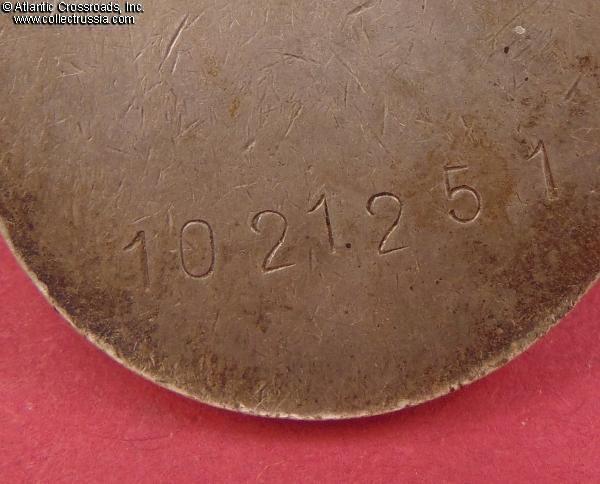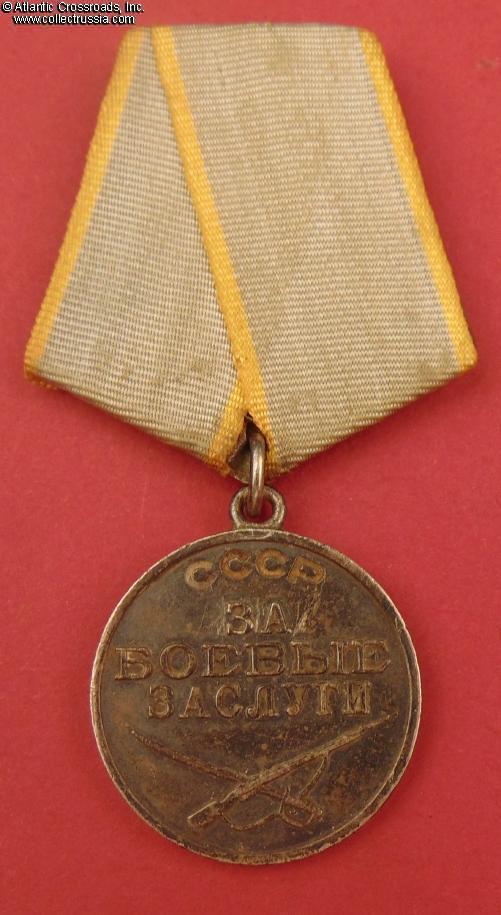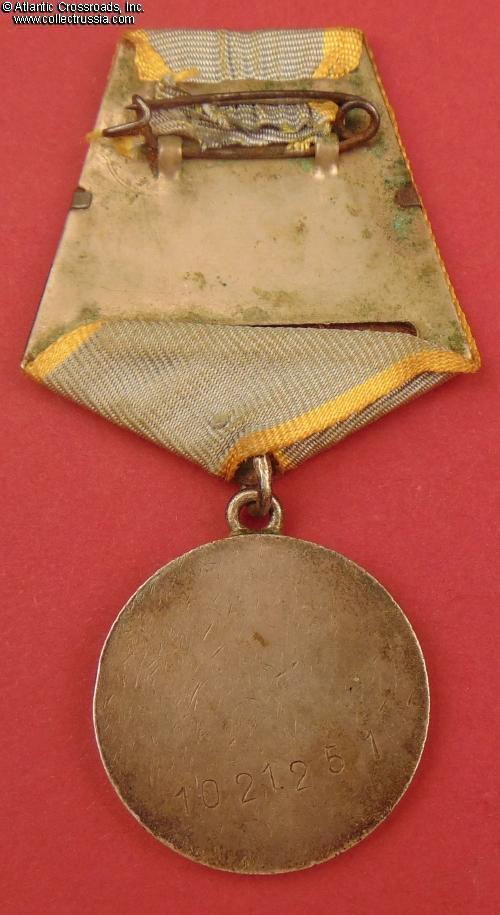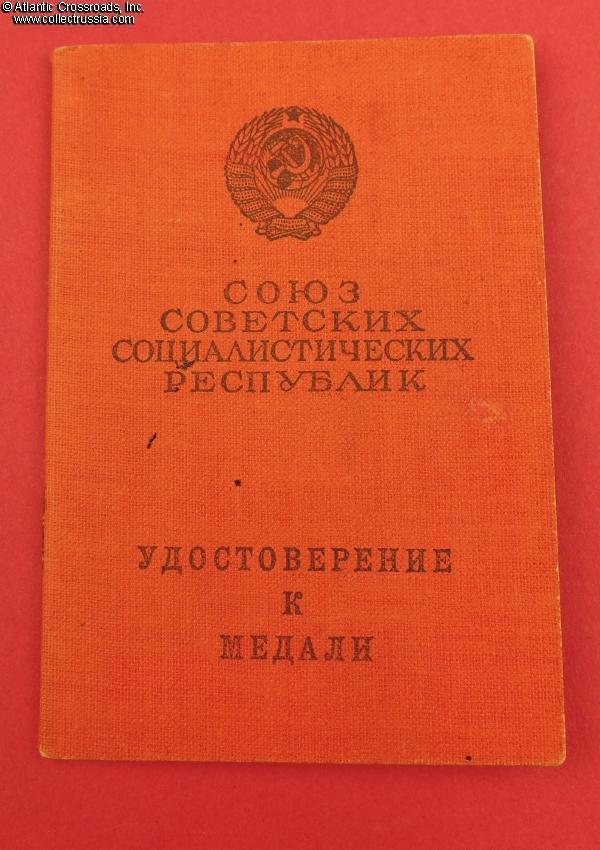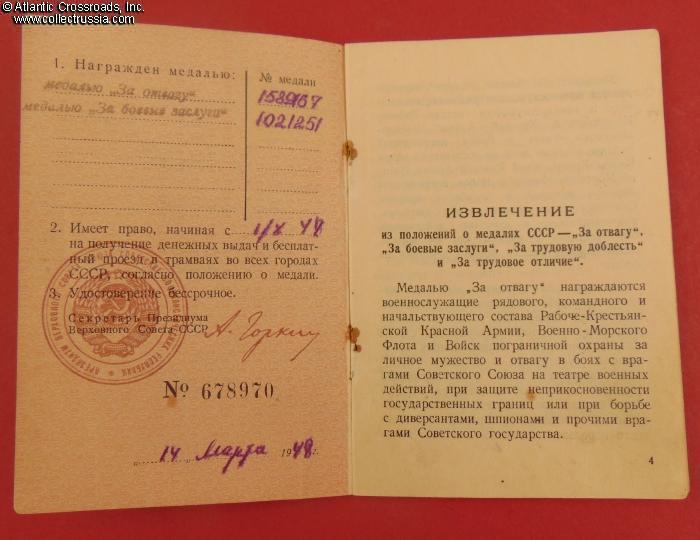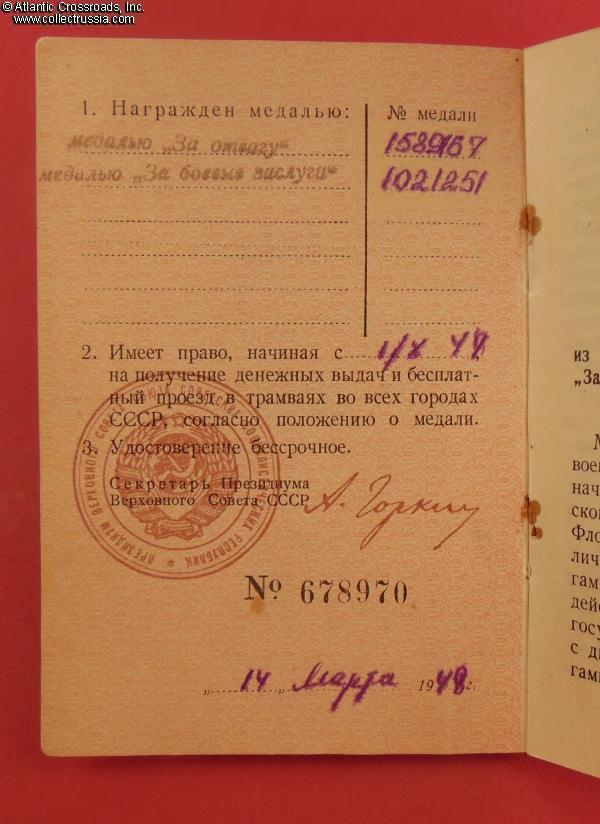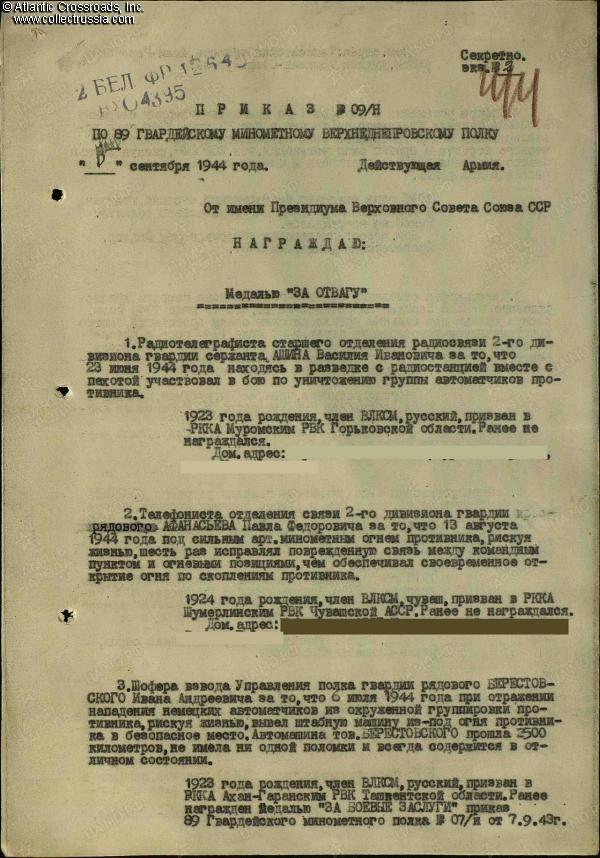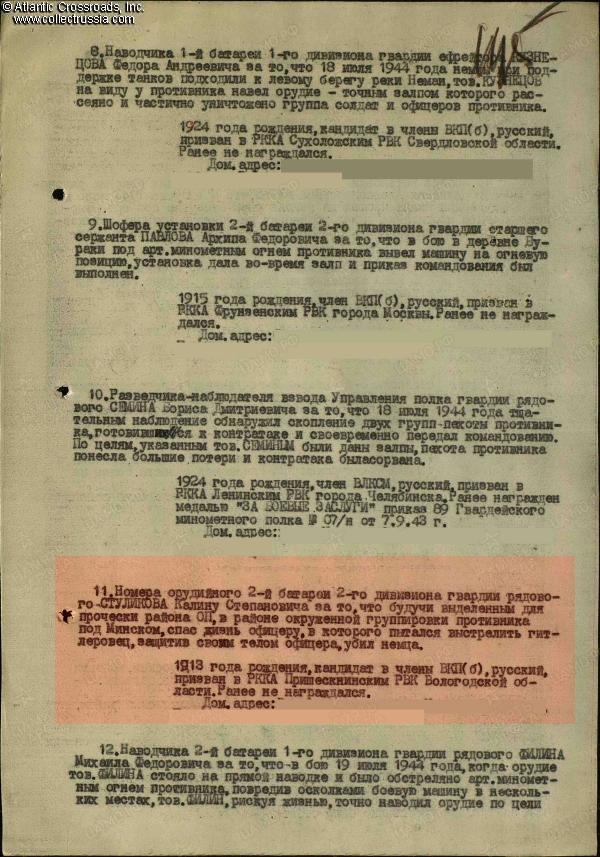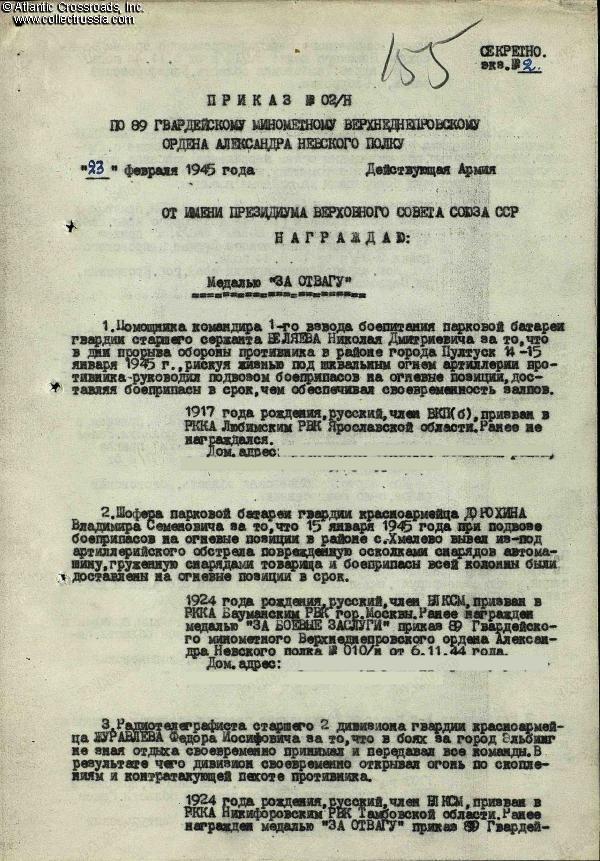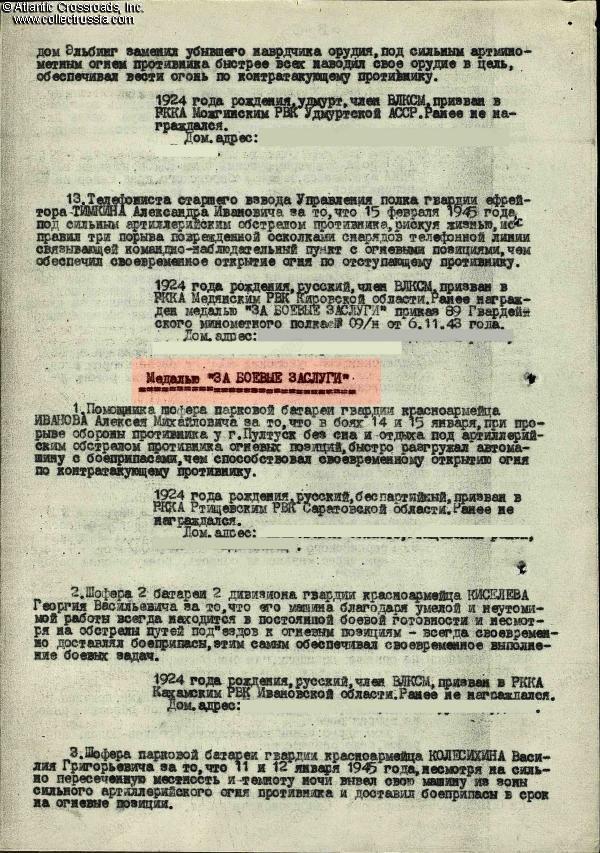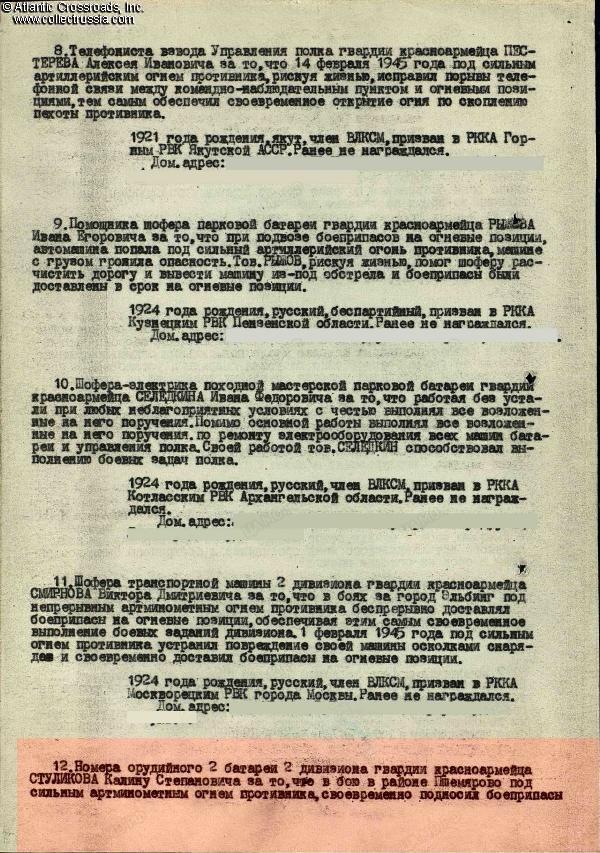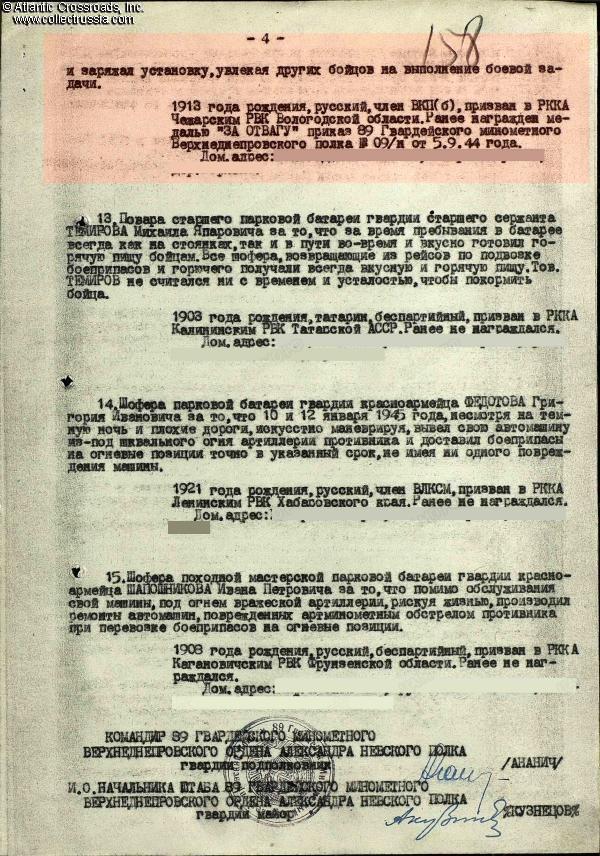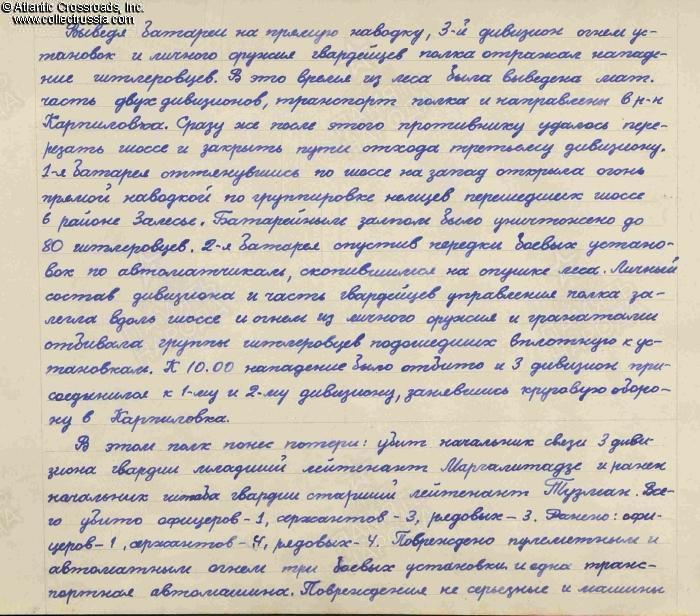
Documented Group of Two Decorations to Guards Private Kalina Stulikov (Калина Степанович Стуликов), 89th Guards Mortar Regiment.
Medal for Valor, Type 2 Variation 1, #1589167. In silver and lacquer; measures 37.3 mm wide; weighs 26.7 g not including the suspension and connecting link.
In excellent condition. The original red lacquer in the letters is completely intact - which is very uncommon for WW2 issues that usually have it completely or partly missing or replaced. The raised details of the artwork are perfect and extremely crisp. There are only some minuscule contact marks, mostly on the reverse, no significant wear of any kind. A very attractive patina to silver, perfectly matchi
Medal for Valor, Type 2 Variation 1, #1589167. In silver and lacquer; measures 37.3 mm wide; weighs 26.7 g not including the suspension and connecting link.
In excellent condition. The original red lacquer in the letters is completely intact - which is very uncommon for WW2 issues that usually have it completely or partly missing or replaced. The raised details of the artwork are perfect and extremely crisp. There are only some minuscule contact marks, mostly on the reverse, no significant wear of any kind. A very attractive patina to silver, perfectly matching that on the Combat Service medal.
Comes on an original WW2 suspension, a two-layer model in steel. The old, possibly original ribbon is slightly soiled but is overall well- preserved, sound and attractive. The silver connecting link appears to be original as well; its ends are still joined with solder.
Medal for Combat Service, Type 2 Variation 1, #1021251. In silver and lacquer; measures 32.5 mm wide; weighs 17.8 g not including the suspension and connecting link. Features separate, soldered eyelet and the early-style curved hilt of the saber.
In very fine condition. The medallion shows small dings throughout and a single, barely noticeable edge bump on the reverse at approx. 10 o'clock, but no significant damage. The raised details of the rifle, sword and lettering are well-preserved and crisp. The red lacquer in the letters is worn-out as is often the case with WW2 issues. A very attractive even toning to silver on both sides.
The medal comes on an original WW2 suspension, a two-layer model in steel. The old, possibly original ribbon is very well-preserved and attractive. The silver connecting link between the medal and suspension appears to be original as well; its ends are still joined with solder.
Medal Certificate, #678970, issued on 14 March 1948. Wrapped in red cloth, it is very similar in format to a WW2 order booklet. The group is complete: the document has only the entries for two medals included in the group (this is corroborated by the archival records). The starting date for special privileges is 1 October 1944, which corresponds with the September 1944 award date of the first medal (in this case, the Medal for Valor.)
The document is in excellent condition. The cover shows only a few tiny spots but practically no wear. The binding is tight. The internal pages are clean and sound.
Born in 1913 in a village of the Vologda Region of Russia, Kalina Stulikov joined the Red Army in 1942. In 1944, he took part in the Soviet Bagration strategic offensive in Belorussia as a crewman of a Katyusha mobile multiple rocket launcher of the 89th Guards Mortar Regiment. Referred to only by the codename "Guards Mortar" by the Soviets due to secrecy and known to the Germans as "Stalin's Organ", these were indeed one of Stalin's "miracle weapons" that made a significant impact on the outcome of the war. Stulikov's unit was equipped with the BM-13 model, that most ubiquitous of the Soviet Katyusha modification. It mounted rocket racks on a variety of Soviet and American-built trucks and fired the M-13 rocket with an 11-lb warhead and up to 5.5-mile range. Although relatively imprecise, Katyushas were used very effectively as a saturation weapon throughout the war and had a terrible effect on enemy morale.
On 23 June, the second day of the Bagration, the 89th Guards Mortar Regiment took part in the opening artillery barrage in its sector of the font and then provided support for the Soviet 70th Rifle Corps, 49th Army, 2nd Belorussian Front, during the crossing of the Pronya River east of Mogilev. Having achieved a decisive breakthrough, the troops of the 2nd Belorussian Front rapidly moved west towards Mogilev and Minsk, crushing the resistance of the German Fourth Army. From that point through the rest of the operation, the 89th Guards Mortars was used as a "separate" unit deployed wherever needed by the Soviet command. On 27 June, it provided critical support to a small bridgehead on the western bank of the Dnieper, effectively using its mobility in the absence of other Soviet artillery. On the following day, the Soviets infantry was already storming Mogilev and the Stulikov's unit was finding their way through the Minsk highways clogged with destroyed German vehicles and equipment.
In the chaos of the following days, many separated groups of Germans made sudden dashes through the forested terrain attempting to escape and at times, stumbled upon the 89th Guards Mortars. In one particularly dangerous incident on 6 July described in the unit's history, some 600 Germans crossed the Minsk highway, directly attacking the regiment's position and cutting off one of its squadrons. In a desperate skirmish, the Katyushas fired at almost point-blank range and the crews fought at close quarters using their personal weapons. The enemy attack was successfully repelled, but the unit sustained a few casualties and damage to a few of the launchers.
Although the subsequent award citation does not mention a specific date, it was possibly on that instance that Private Stulikov distinguished himself. According to the archival document, he with a group of soldiers was making a sweep through a forest "in an area of the German group encircled near Minsk when a German straggler took aim at the officer commanding the Stulikov's group. The heroic private shielded the officer with his own body and then killed the attacker. Interestingly, Stulikov was rewarded with a medal only two months later due in no doubt to the highly fluid character of the battle. The Medal for Valor was bestowed upon him on 15 September 1944 by a general order of the regiment that also awarded a number of other soldiers for the Operation Bagration. It is worth mentioning that for its performance in the operation the regiment was given the honorific title of Verkhnedneprovskiy (i.e. "of the Upper Dnieper fame") by Stalin's decree and a bit later was awarded with the Order of Alexander Nevsky.
Private Stulikov earned his next decoration in the Vistula-Oder Operation in which his unit provided fire support to the 108th Rifle Corps, 2nd Shock Army, 2nd Belorussian Front, during its advance in southwesterly direction from Pultusk to Modlin and then east to Poznan. He showed particular bravery in an engagement near the Polish village of Przeźmierowo northwest of Poznan. During the skirmish, he kept carrying ammunition to his rocket launcher, none withstanding blasts of enemy artillery shells in close proximity. His fearless conduct inspired the other soldiers of his unit. On 23 February, the day Poznan fell to the Red Army and, incidentally, the official Soviet Red Army Day, Stulikov was awarded with the Medal for Combat Service, his second and final decoration of the war.
Research Materials: photocopy of the award decrees for the two medals, each containing a brief citation; relevant pages of the 89th
Guards
Mortar Regiment's combat diary from the Russian archival website pamyat-naroda.ru.
$335.00 Add to cart


